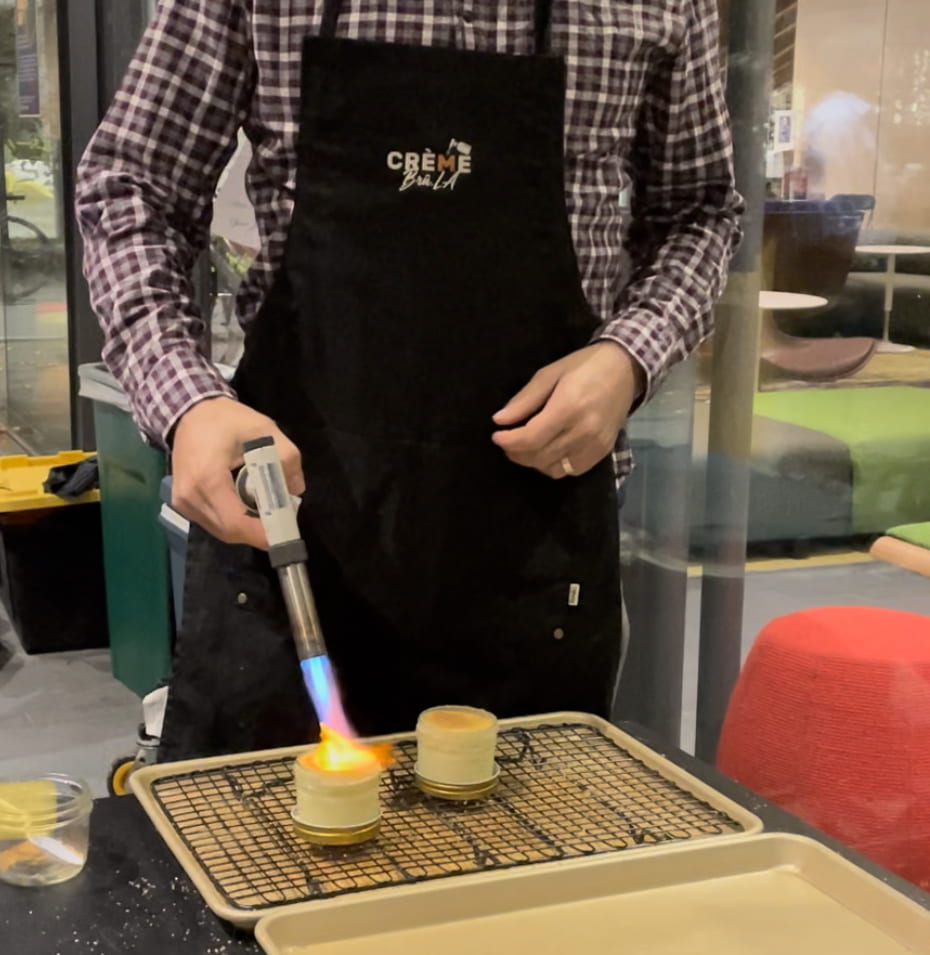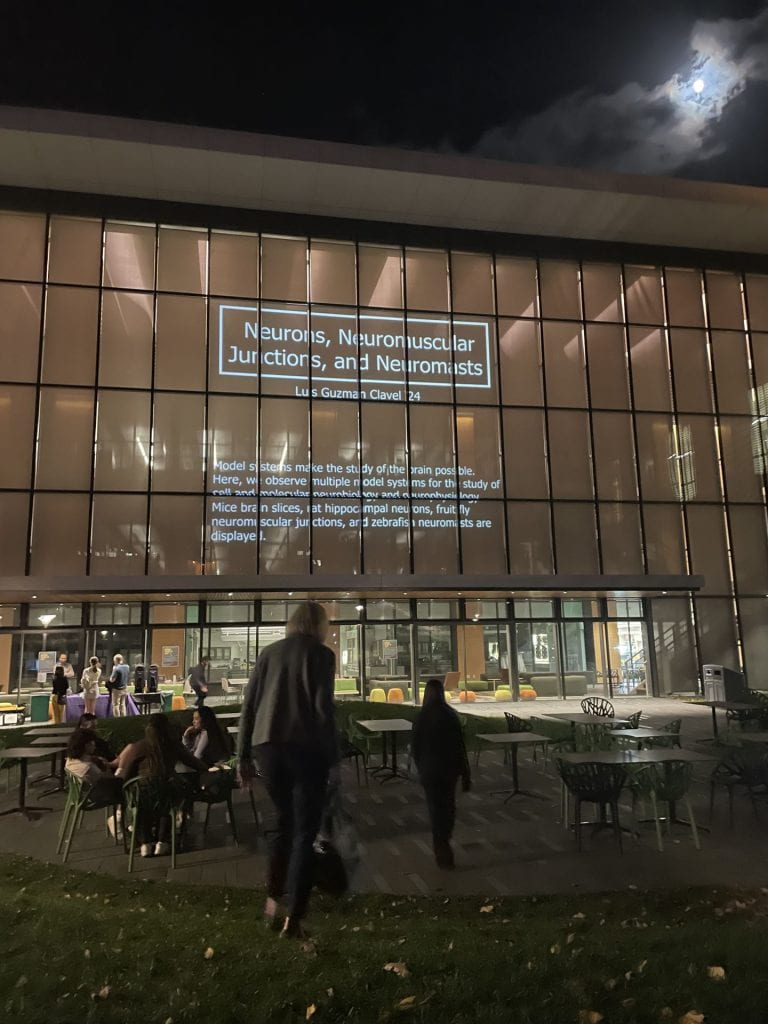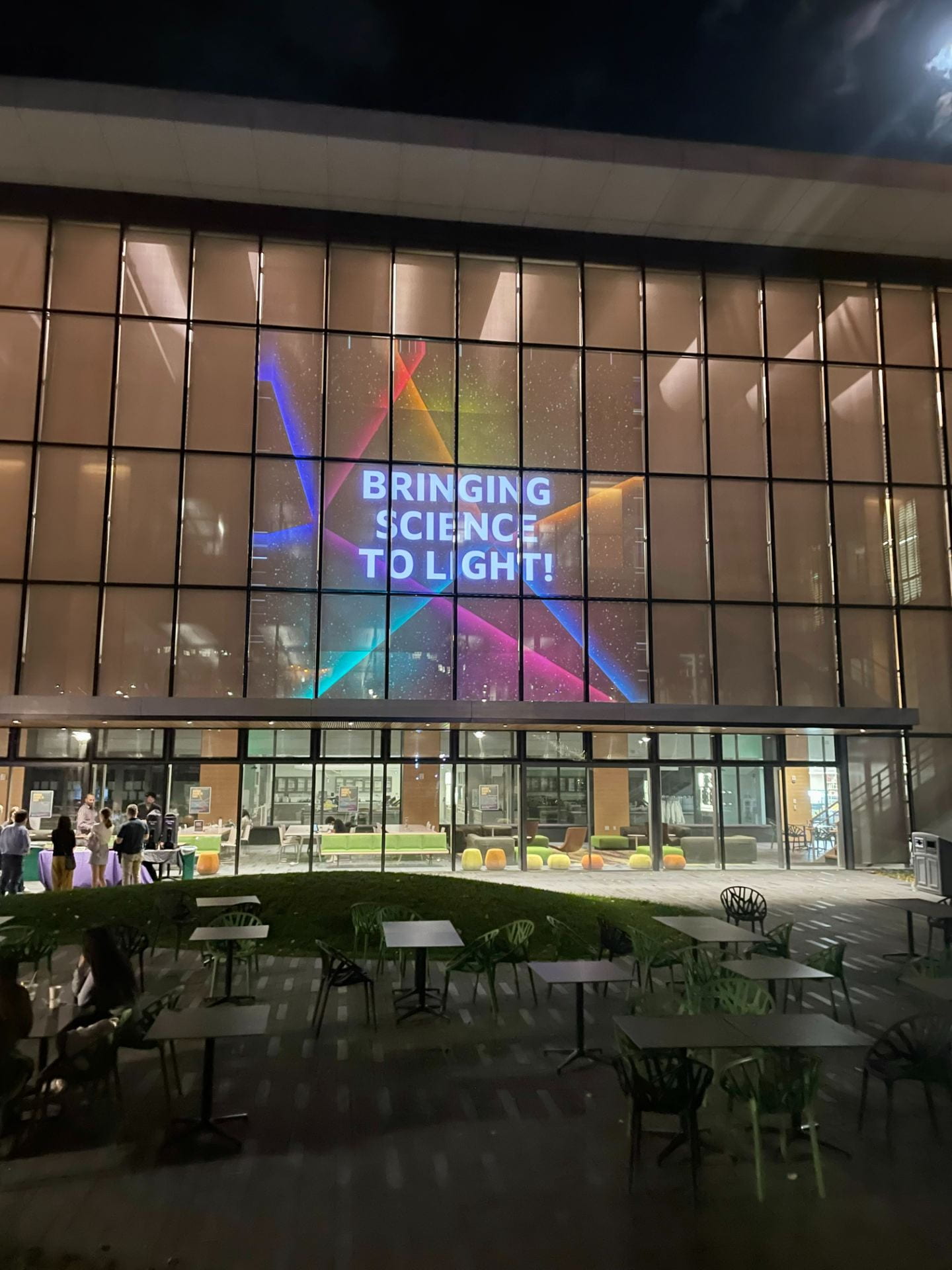Science and art, commonly considered distant disciplines, actually go hand in hand. In fact, they complement each other and propel one another forward.
Science illustrators, therefore, play a very valuable role in bridging the gap between these subject areas. A recent New York Times article explains an environmental science-related example of this phenomenon: “Pairing illustrations with written comments, art with science, field sketching is used by researchers and artists to document nature…In an age when we’re never more than a swipe away from a powerful camera, field sketching seems radically homespun. The practice ‘forces you to slow down, to take things in, to simply look.’” In other words, in a mutually beneficial relationship, science inspires art and vice versa.
During Family Weekend from 6-9 pm on Friday, November 4, and Saturday, November 5, a special event called “Bringing Science to Light!” transformed the Science Center into a canvas, as art inspired by STEM student research was projected onto the building’s facade. Another festive component of the event was delicious crème brûlée provided by CremeBru.LA.

According to the production description, the evening was a “partnership between the Arts & STEM” as a “light-based installation that combines data and graphics pulled from research across our STEM fields,” including, “physics, biology, astronomy, geology, and genetics.” The scientific concepts were displayed through dynamic media. In one slide, a neuron was illuminated neon blue. In an exhibit entitled, “Potential Landscapes,” a green, three-dimensional plane appeared. In another segment still, the plane morphed into a deep red. Watching the scenes unfold was very much a sensory experience for the viewer.

When asked how it feels to be an artist involved in this exhibit, Caroline Wu (‘26) said, “I really liked collaborating with Tina Zhang [‘24; her co-artistic creator], especially because I have so much to learn from her as an artist…I got to work with Fiona Anstey [‘24; the student researcher], who is a really awesome scientist.”
Another event participant, Luis Guzman Clavel (‘24), had a slide called “Neurons, Neuromuscular Junctions, and Neuromasts.” The description preceding his piece read: “Model systems make the study of the brain possible. Here, we observe multiple model systems for the study of cell and molecular neurobiology and neurophysiology. Mice brain slices, rat hippocampal neurons, fruit fly neuromuscular junctions, and zebrafish neuromasts are displayed.” When asked what the process of creating the display was like, he said that “taking those images throughout the years has been so much fun; the earlier ones there are the NMJs [neuromuscular junctions], which I took in the summer of 2021, and everything else has been in 2022. Learning how to do widefield, confocal, and light sheet microscopy has been a great process, and I still have much to learn.” To explore his exhibit further, check out the @amherstscience Instagram page.
The Amherst College campus is a microcosm for the world more broadly in that there is sometimes a deep divide between STEM and humanities disciplines. However, the Bringing Science to Light event demonstrates how that division is largely arbitrary and counterproductive. Scientists need a way to share their findings effectively with a wider audience, and artists need inspiration to produce breathtaking creations. A partnership between these historically disparate areas of study might be the key to progress for them both.

You must be logged in to post a comment.